
The 3 things that I don’t like to hear out of the mouths of movie-watchers:
1. I don’t watch black and white movies.
2. I don’t watch movies with subtitles.
3. I don’t watch movies that are older than my grandmother.
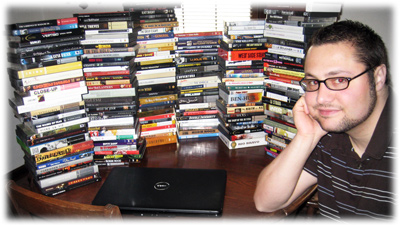 Movies allow audiences to transport to a magical place in time. To allow them to enter the minds of other character’s and learn to identify with them, if only for a short period of time. Out of all the different art forms films are the easiest forms for empathy, and I believe great films can even enrich our lives and make us into better people.
Movies allow audiences to transport to a magical place in time. To allow them to enter the minds of other character’s and learn to identify with them, if only for a short period of time. Out of all the different art forms films are the easiest forms for empathy, and I believe great films can even enrich our lives and make us into better people.
Ever since early childhood, movies have always been a deep love and passion of mine. They were always there to keep me company, and even at times would make me laugh, make me scared and make me cry. I remember watching Steven Speilberg’s Raiders of the Lost Ark, Richard Donner’s Superman and George Lucas’s Star Wars throughout my childhood because I loved the epic spectacle, the groundbreaking special effects and the heroic romance and drama.
And yet as I got older, my personal tastes were slowly changing, and my feelings, ideas and thoughts started to drastically shift. I still had a great appreciation for those great American entertainments… but I was seeking films that could offer me something more, films that were more in-depth, and were much more mentally and intellectually stimulating.
Ever since I was very little I’ve always been slightly different. I was born with a severely weak heart and needed to undergo heart surgery while only just a few months old. I was quite lucky to have survived and through extensive surgeries and the wonderful miracles of science I am still alive and well. And yet throughout my adolescent life I’ve always have been expecting the inevitable, which is ultimately my heart completely failing me and hopefully me being able to retrieve a new one.
And so growing up with the unsurety of life and death I’ve come to have a much more pessimistic, bleak and nihilistic perspective on the world I was living in. At age 14 I happened to come across Stanley Kubrick’s science fiction classic 2001: A Space Odyssey, and I was immediately entranced by the harsh environment, the haunting soundtrack and the sterile and cold emptiness of Kubrick’s frightening vision of the future. I didn’t really know who Stanley Kubrick was at the time, but the desolate and wondrous interpretation of the universe was something that I could greatly relate too, and I was intrigued in discovering more.
Then I happened to watch Frances Ford Coppola’s poetic Apocalypse Now, and the startling images of war, chaos and madness deeply disturbed moved me in ways I couldn’t even imagine. I’ve never seen a war film full of such haunting imagery, along with cruel, barbaric themes of unforgettable power which explored the dark sides of the human soul.
When I came upon Martin Scorsese’s Raging Bull I was astonished at the poignant black and white cinematography and the powerful brutal performance by Robert Deniro as Jake La Motta. Deniro created a fascinating character study of a man who was tragically battling a internal masculine rage and jealousy which eventually broke him down and destroyed him. Deniro’s performance also made me notice the extraordinary importance of character acting within the world of film.
Character acting started with the stage way before cameras were even invented, and that style of acting continued through the early stages of film, most iconically by the great Laurence Olivier. During the mid 50’s method acting started to take over. It was a style that was more subtle, where actor’s absorbed and transformed into the character they were playing. Most critics agree it started with the great Marlon Brando and his sensational performance in the Tennessee Williams film adaptation of A Streetcar Named Desire. That film took acting to a new level. And yet, Raging Bull took acting not only to another new level – but a new film-making level as well. The film stayed with me for weeks and inspired me to move towards more dramatic and mature films that involved more controversial and taboo subject matter.
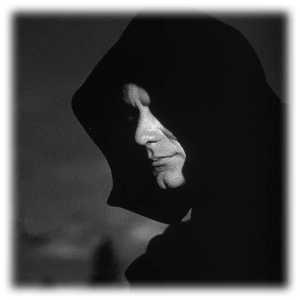 After renting the powerful historical drama Schindler’s List, I realized that black and white could be used as a more powerful tool than color when presented effectively on the screen. The images seemed to have more depth and weight, which would lead to my interest in older classic American movies. My first classic movie was Casablanca which is an experience I will never forget. I rented it from the local library and while watching it I couldn’t believe how beautifully the story unfolded, along with the memorable dialog, the endless classic quotes and the iconic romance between Humphrey Bogart and Ingrid Bergman.
After renting the powerful historical drama Schindler’s List, I realized that black and white could be used as a more powerful tool than color when presented effectively on the screen. The images seemed to have more depth and weight, which would lead to my interest in older classic American movies. My first classic movie was Casablanca which is an experience I will never forget. I rented it from the local library and while watching it I couldn’t believe how beautifully the story unfolded, along with the memorable dialog, the endless classic quotes and the iconic romance between Humphrey Bogart and Ingrid Bergman.
I was finally discovering what GOOD FILMMAKING was all about, and this was simply the beginning.
I was finally introduced to my very first western, John Ford’s stunning techno-colored epic The Searchers. The opening sequence was so beautifully shot that I could freeze, frame it and hang it on my wall. John Wayne’s frightening, racist portrayal of Ethan Edwards was a character I was immediately drawn to. Ethan Edwards morally questionable attributes were highly similar to various other conflicted and alienated anti-heroes within the history of film, such as Taxi Driver’s Travis Bickle, Maltese Falcon’s Sam Spade and The Godfather Part II’s Michael Corleone.
I later came upon the terrifying horror film Night of the Hunter. That film — and the character that Robert Mitchum created — truly scared me more than the films I grew up with earlier in my life. When watching Alfred Hitchcock’s most personal film Vertigo, I came across such disturbing themes of obsession, guilt and murder in ways I have never seen before. I ultimately made my way to Victor Fleming’s epic Gone With the Wind, and engrossed myself with two of the most fascinating and psychologically unstable romances I have ever witnessed on the screen. By the time I hit age 18, I’d gone through all of the films listed on the Top 100 AFI list and probably knew more about the films of Humphrey Bogart, James Stewart, Katherine Hepburn, James Cagney, Bette Davis, Cary Grant and Spencer Tracy than my own grandparents. I became obsessed with the Film Noir genre in American films like Double Indemnity, Touch of Evil and Sunset Blvd, which were amazingly well written and shot. I loved the anti-heroic protagonists, the backstabbing femme fatals and the memorizing shadows, lighting and wet streets that the atmosphere created for its despicable characters.
It was when I finally saw Orson Welles’ Citizen Kane for the first time, that I truly witnessed film at its most artistic and creative peak. Citizen Kane also made me realize that film could rise above just simple entertainment — and become an art form as well. Its opening shot with Charles Foster Kane whispering his last words, “Rosebud”, then dropping the snow globe onto the floor was extraordinary.
My love for learning about film didn’t stop there. I started getting into silent films and learned that sometimes the essence of a character was not necessarily heard through the words of their voice but captured through their face and their expressions. Charlie Chaplin’s City Lights touched me on an emotional level most films — silent or non-silent have not. D.W. Griffith’s The Birth of a Nation gave me a frightening idea on how racism was perceived back in 1915. And when watching Carl Dreyer’s masterful The Passion of Joan of Arc, I gazed into the eyes of actress Renée Falconetti and I felt as if she is allowing me to delve into the deep dark depths of her soul. When arriving to the vampire classic Nosferatu the great silent director F. W. Murnau introduced me to my love of German Expressionism, which led to films like Fritz Lang’s serial killer film M, and into the American Gangster films of the pre-code 30’s like Howard Hawk’s Scarface. I ultimately realized I had made a complete circle when I was led right back into the Film Noir genre where I originally started from.
Eventually foreign silent films led me to the foreign genre itself, and I remember purchasing my first 40 dollar Criterion DVD of Ingmar Bergman’s The Seventh Seal. When actor Max Von Sydow confronts Death on the beach in the beginning of the film, I knew I stepped into brilliant uncharted territory. Ingmar Bergman’s bleak themes on death and the emptiness of a world without God really connected with me on a personal level, which no American film before had ever done.
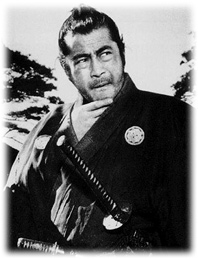 Thoughout my entire life I have been obsessed with the theme of Death, the questions of the afterlife and the absence of a God that might or might not exist. I was born Catholic, but it wasn’t until I turned 22 when I officially discovered I was an Atheist. When watching The Seventh Seal for the first time, Bergman related to themes in my own life and the questions and fears that were portrayed were very similar to the questions and fears that I have dealt with, and am still dealing with today.
Thoughout my entire life I have been obsessed with the theme of Death, the questions of the afterlife and the absence of a God that might or might not exist. I was born Catholic, but it wasn’t until I turned 22 when I officially discovered I was an Atheist. When watching The Seventh Seal for the first time, Bergman related to themes in my own life and the questions and fears that were portrayed were very similar to the questions and fears that I have dealt with, and am still dealing with today.
The Seventh Seal led me to Bergman’s other masterworks, including his mysterious surreal Persona, and his 5 hour epic swan song Fanny and Alexander. Bergman also became the gateway to other International art filmmakers, artists who made films not necessarily for the audience, but personally for themselves. When I got to Federico Fellini’s surreal 8 ½, Akira Kurosawa’s existential Ikiru, Jean-Luc Godard’s exhilarating Breathless, Andrei Tarkovsky’s haunting Andrei Rublev, Luis Bunuel’s erotic Belle de Jour and Yasujiro Ozu’s emotional Tokyo Story; I realized I was no longer a movie buff, but a film buff. I was finally watching FILMS, not movies, and it’s then that I realized what had happened to me: I became a Film Snob, and was damn proud of it.
Legendary film critic Roger Ebert has been a big influence in my education of film, and I’ve followed him all the way up until his death in 2013. I’ve read most of his reviews and seen all of his movies listed in his Great Movies books. There were several films listed in those books that I would never have discovered if not for him. He was fortunate to become a critic at a time in the film industry when the Production Code was near its end and fresh, young independent filmmakers like John Cassavetes, Martin Scorsese and Arthur Penn were making their way in.
Gritty realistic violence and more explicit sex started to seep into various late 60’s counter-culture films like Midnight Cowboy, The Wild Bunch, The Graduate and Bonnie and Clyde, ultimately leading to The Godfather, Taxi Driver, Annie Hall, The Last Picture Show, The French Connection and One Flew Over the Cuckoos Nest in the early 70’s. This sudden cultural, historical and political change in the movie industry during this revolutionary period created the New American Cinema movement, which forever changed the way we perceived American movies.
Roger Ebert’s knowledge of film really influenced me and my film tastes. Of course, there were a bunch of films he praised that I greatly disliked and films I absolutely loved that he greatly disliked, but isn’t that the great thing about art? Sometimes beauty is in the eye of the beholder and with art there’s no exception to that statement. I also want to praise him on a personal level for struggling with his battle against cancer, and because of my past health experiences, I commend him for taking on that fight. Thank you Roger Ebert for your contributions to the world of film over the years. You will be missed.
After years of constantly watching Art Films, listening to the commentaries on the DVDs and learning about the history in the making of these films, I realized I was slowly educating myself much more than any film school could ever do. I’ve learned about the different film styles that were used around the world, like Film Noir and The Big Sleep, The Screwball Comedy and His Girl Friday, Italian Neorealism and The Bicycle Thieves, Surrealism and Un Chien Andalou, Japanese Newwave and The Woman in the Dunes, German Expressionism and The Cabinet of Dr. Caligari, The French New Wave and The 400 Blows, Soviet Montage and Battleship Potemkin, New German Cinema and Aguirre: The Wrath of God, neo noir and Chinatown, and British Kitchen Sink Realism and Saturday Night and Sunday Morning. I understood that each film movement presented a recorded time capsule in history and a cultural, political, sociological and theoretical artistic expression similar to such art forms as literature, music, sculptures and paintings.
There is a difference between being a movie buff and a film buff… let me explain. My siblings are movie buffs. They go to see a lot of movies in the theatre. Some good, some not very good, most not so good. But they go for the simple entertainment aspect or to see a certain favorite actor or actress that they particularly like.
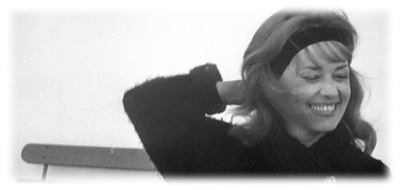 A film buff is a person who goes into a film to take in the full spiritual and emotional experience, sometimes joyful, sometimes heart wrenching. They want to absorb themselves within the characters and the story. They want to walk away from it shaken, moved, disturbed and maybe even learn a little more about themselves that they thought they never knew. Art films are made much differently than most mainstream movies. They move at a much slower pace and take their time with the characters and story, and eventually it all unfolds on its own. Art Films exist in their own time and place, and audiences can either accept them or not.
A film buff is a person who goes into a film to take in the full spiritual and emotional experience, sometimes joyful, sometimes heart wrenching. They want to absorb themselves within the characters and the story. They want to walk away from it shaken, moved, disturbed and maybe even learn a little more about themselves that they thought they never knew. Art films are made much differently than most mainstream movies. They move at a much slower pace and take their time with the characters and story, and eventually it all unfolds on its own. Art Films exist in their own time and place, and audiences can either accept them or not.
Most American or mainstream films set themselves in the AUDIENCES time and space. They usually move much quicker, have more action, quick cuts, faster editing and jump from plot point to plot point to move the story along faster, so it doesn’t bore the audience. Unlike Art Films, these movies have no real quiet moments, and the films are not confident enough to feel they can sit in a moment in time, and have the audience sit quietly with them.
Throughout this cinematic journey I have taken I’ve discovered the works of some of the greatest film artists in the world: Ingmar Bergman, Alfred Hitchcock, Federico Fellini, Luis Bunuel, Orson Welles, Andrei Tarkovsky, Powell & Pressburger, John Ford, Jean-Luc Godard, Krzysztof Kieslowski, Stanley Kubrick, Michelangelo Antonioni, Charles Chaplin, Kenji Mizoguchi, Fritz Lang, Werner Herzog, Akira Kurosawa, Howard Hawks, David Lean, François Truffaut, Yasujiro Ozu, Jean Renoir, Ernst Lubitsch, Agnes Varda, Satyajit Ray, John Huston, F.W. Murnau, Eric Rohmer, Sergei Eisenstein, Louise Malle, Robert Bresson, Masaki Kobayashi, Billy Wilder, Josef von Sternberg, Jean Pierre Melville, Rainer Werner Fassbinder, Carl Theodore Dreyer and many more.
I am a Film Studies graduate of UW-Milwaukee and I’m proud to say that those four academic years learning about film history, film criticism and film theory were some of the best experiences of my life. During my senior year of college I was even awarded an Internship at the Charles Allis Art Museum and became the Co-Host of Movie-Time, in which I presented classic 30’s and 40’s movies all on original 16mm reel-to-reel film. Unfortunately the one aspect about film school that I found slightly disappointing was the fact that most of the other film students in my program had never seen a film by Ozu, Bresson or Bunuel. They might have heard of one or two Billy Wilder films, could name half a dozen Hitchcock classics, and almost all of them watched Star Wars and The Dark Knight more times than I cared to remember. And when many of the students began listing their all-time favorite films, most of the titles were made after the 1970’s, and almost half of the movies named were directed by either Quentin Tarantino, Kevin Smith, Robert Rodriguez, or Christopher Nolan. When I would start naming off certain films like Ran, Au Hasard Balthazar, Viridiana, and Sansho the Bailiff, they would either seem disinterested or I would hear them state one or all three of the things that I cannot stand to hear out of the mouth of a movie watcher. (The three things are listed at the top of this page.)
Most young people today seem to be less interested about the classics of the past, and more interested with the popular rise of comic book movies, modern CGI and 3D effects, video games, endless movie sequels, franchises and remake after remake. In a society made up of MTV music videos, trashy reality shows, social media narcissism, Saturday Night Live skits and the latest Adam Sandler comedy, the patience of filmgoers seems to have greatly diminished. Being raised in a consumer society that was heavily brought up on pop culture, fast food, and mindless television, even I am startled when making the discovery that more young people are able to reference scenes of classic American movies not by watching the film, but simply by being brought up on endless Family Guy parodies, satires, and quick-witted puns. Today, if the normal movie watcher can’t be patient enough to wait around for the arrival of Harry Lime in Carol Reed’s The Third Man, what will moviegoers be like in twenty years from now?
Throughout the years of watching various films I have become so familiar with particular film directors that they become something like a close friend. Bresson presents to us the sad world of human weakness and harsh cruelty, Bunuel shamelessly enjoys pointing out the fetishes and absurdities in the most serious of subject matters, Kurosawa celebrates the accomplishes of men in a masculine society, Tarkovsky has us consolidate our feelings through transcendental poetry and deep meditation, Fellini shows us the self doubts of an artist and the grotesques of the circus, Antonioni explores the emotional alienation between a man and a woman, and Ozu shows us the universal themes of family and the acceptance of change.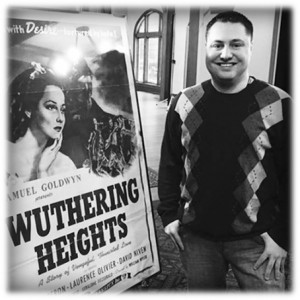
And finally every true film lover should end up arriving at Bergman; a filmmaker who intensely explores the themes of existentialism, bleakness and death, while projecting the guilt and frustrations of living in a godforsaken world.
This blog is a way to share my personal love and passion for Classic Art Films and all my film news, photos, articles, merchandise and essays will be culturally important to the history of cinema. I realize most people won’t be interested in the type of films I promote here… and that’s OK. But, if I can inspire someone new to appreciate at least one of these art films, than my goal has been achieved.
![]()



